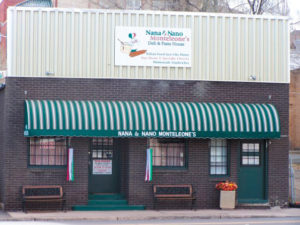By John Mattingly
Following my recent death, I’ve been wiling away the hours in my garden, a great place to grow an autobiography.
“Life begins the day you start a garden.” – Chinese proverb.
In full agreement with this proverb, Western religious mythology incubates humans in a garden, the Garden of Eden, where man and woman have dominion and need no clothing. The creator apparently adds a temptation to this appealing creation: a Tree of Knowledge. Adam and Eve eat from that tree, gain knowledge, and are then kicked out with immaculate degeneration.
As a kid, this never made sense to me, that eating an apple and getting smart could be a sin. I had a garden in our back yard modeled on the Have More Plan where I especially liked to grow Northern Spy apples, beans, Bibb lettuce, and sweet peas. I put sunfish in the seedbeds and built small reservoirs with diminutive ditches that served water to the crops. The snakes in my garden ate bugs and did not talk.
Many afternoons were spent on my back among pea and bean vines, eating the harvest I was sent to collect. I have always thought that the Woodstock hymn by Joni Mitchell, “… we’ve got to get ourselves back to the garden …” refers more to our own backyard than to Eden, a garden full of traps; we were fortunate enough to sin our way out of it.
Voltaire’s Candide followed Candide and Pangloss through the terrors and wonders of the Crusades, from noble eviscerations to sheep overloaded with gold. Candide and Pangloss then returned home to conclude, after all these adventures, “… let us tend our garden.” This suggests that after a full engagement with life one understands the luxury of tending a garden; or maybe it means they should have tended their garden from the beginning.
“To forget how to dig the earth and to tend the soil is to forget ourselves.” – Ghandi.
[InContentAdTwo] Franz Kafka: “So long as you have food in your mouth, you have answered all questions for the time being.” When asked why he’d never left Vienna, Kafka said, “If you ever doubt the infinite variety of the world, pick up a handful of dirt. Indeed, within a handful of dirt there is an infinite world of particles, from clay, sand, and silt to quarks, charms, and bosons.”
Because I started farming in the late 1960s, the innovation of center pivot irrigation influenced my direction and decisions. The ability to make it rain by pushing a button created a very seductive illusion of influence over weather. Pivot manufacturers often said things like, “It would be better if it never rained. That way we can totally control the moisture.”
Center pivots did not become popular immediately. The machines seemed complicated, ungainly and inefficient, like clumsy insects that required a lot of electricity. Some early installations were done improperly causing “crashes” that brought to mind train wrecks, and the pivot towers bogged down in heavy clay soil. Irrigating from open ditches with siphon tubes, or from gated pipe, used only gravity and did not “waste” the corners.
These arguments swayed many farmers to reject the entire notion of farming in circles. Some farmers even claimed that their equipment would not operate effectively in circles. Many times I heard farmers say, “I square my corners; I don’t round them.”
Unsurprisingly, resistance to pivots did not take root in places where there hadn’t been a previous rectilinear watering system, such as Eastern Colorado and the High Plains, or Middle Eastern deserts. In these places, center pivots were seen as revolutionary, almost miraculous, and more efficient to farm than rectangles.
In my case, pivots created a way to bring ground into production that was too uneven to gravity irrigate, or too marginal in soil quality to be worth messing with. If you can make it rain, and fertilize through the man-rain, it became possible to grow decent crops on ground that otherwise would be left at the margins.
I mention all of this because farming in circles made it natural to garden in circles. We have always had circular gardens. A square meal is great, but as Kafka noted, “The limited circle is pure.” As I passed into afterdeath, I noticed we had a stack of old, rusty livestock watering tanks, about eight feet in diameter and two feet high. I decided to garden them. The tanks had the advantage of being able to build a soil within them, utilizing available organic matter, and thus concentrate fertility and yield. The tanks also keep varmints at bay, reduce stooping and irrigate easily with soaker hoses.
That was last year, and the second season of gardening in circles shows a lot of potential, which I hope to report in subsequent columns. Few people have old stock tanks around the yard, but there are myriad ways to enclose and elevate a bit of earth and grow basics like potatoes, beans, corn, greens and fruits with various concentrated growing systems. This is especially true when you realize that simply eating less and reducing consumption of meat and dairy (the planet’s largest sources of methane and nitrous oxide greenhouse gases) does more to reduce adverse climate changes and human footprints than recycling, biking, LED bulbs, electric cars and public transportation combined.
Weed it and reap. – Old saying.
As Cicero said, “If you have a library and a garden, you have everything you need.” Old gardeners never die; they just run out of thyme. – Old saying.
John Mattingly cultivates prose, among other things, and was most recently seen near Moffat.


